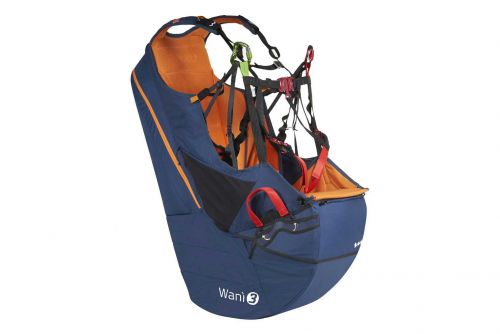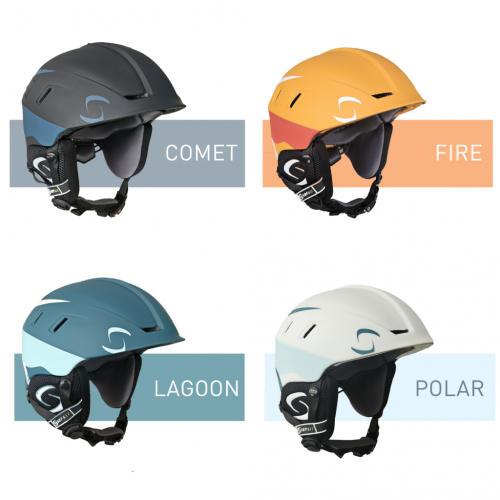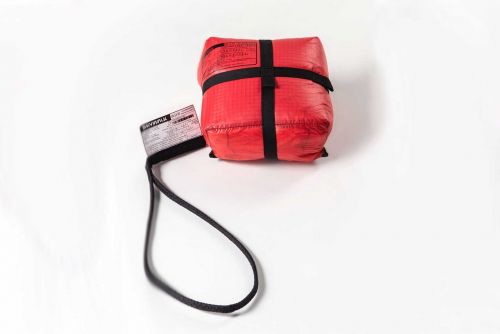Manufacturer-Information
LTF/EN-A EVOLUTION
Been successful squaring the circle? Not yet. Calculating PI exactly? No chance. Design an extra safe paraglider who makes a lot of fun and performs really well? DONE! It is the EVOULUTION by U-Turn. The first wing by U-Turn available in 2 designs.
The new LTF-A by U-Turn brings technology out of the high tech sector, the acro wing THRILLER, directly to the training wings, “the EVOLUTION has Pressure Balance Valves (PBV)” reports chief designer Ernst Strobl. The Valves in the bottom sail support a supreme and easy starting which offers in particular trainees or leisure pilots the plus in safety to focus on other things. “The valves work so quick and effective that the wing has nearly no tendency to overshoot”, says Strobl.
In flight the system gives valuable support, too. The experience from working with great angles of attack in the THRILLER is a full payout in the EVOLUTION design process: “The canopy is a complete new design, and so I could make a perfect match in between the profile, the valves and the crossports.” The result is a so far unreached resistance to collapses and nearly no tendency to go paracutal. ”The canopy repressures so quick,” Strobl is proud.
Pressure Balance Valves were designed to increase the stability and the fly ability of the acro wing THRILLER under bad angles of attack. But the PBV has the potential to raise the safety level as the EVOLUTION shows now. When the wing is partly underpressured the valves support a quick repressuring, in parachutal flight the valves give the wing a strong will to fly with only a little tendency to shoot forward. “As conclusion one can say the valves take action when the wing needs air but has not enough speed”, says Strobl.
In a video one can see how exact the system is working. When the wing has a side collapse, valve after valve is opening and filling the wing while the other side continuous flying unimpressed, Strobl reports his study. “In a B-stall all valves are open and the wing descends with 8 to 10 m/s very calm: no flapping, no wafting. Only smooth and controlled sinking”, so Strobl.
„From the feedback of our customers we know that all the safety in the wing must not cut the fun in flight.” These are the 2 major points in the specification list. Thus he designed a wing with an flat aspect ratio of 4.5 and an innovative line setup. 2 main A lines, 3 main B (inclusive stabi ) and 2 main C minimize the drag. 4 different line diameters from 0,95mm to 2,2mm represent the optimal balance in between durability and minimal cross sections. “This results in an agile wing, the EVOLUTION reacts relative direct to commands and can be thermalled pretty flat,” so Strobl. But the EVOLUTION can be moved dynamic too. The trim speed is metered to 39km/h reports Strobl the facts. Accelerated the wing is up to 48km/h fast- and this all on LTF–A- safety level.
It is important for Strobl to point out that all certification testing has been proceeded with the serial line setup (without additional folding lines) and that the EVOLUTION has passed the tightened certification for deep spiral on level A. “The wing is perfect for schooling “, tells U-Turn co founder Thomas Vosseler according to his own experiences “but I can also say: the wing makes pure fun.”
The Evolution is available in attractive colors in 4 sizes from S (50-75kg) to L (90-120kg). During the winter there will follow a XS version (40-65kg) and XL (105-140kg). The EVOLUTION by U-Turn is the first wing available in 2 designs. Beside the classic U-Turn design there will be a new straight geometric color pattern which matches perfectly the technoide design and underlines the exceptional innovative position.
- Product number
- 20123243
- Manufacturer
- U-Turn
- Brand
- U-Turn
- EN
- A
Pressure Balance Valves von U-Turn: Stabilität durch optimierte Belüftung
|
|---|
.jpg)
- Paraglider
- Inner Bag
- Compression Strap
- Packing Bag
- Speed System
- Manual on CD



